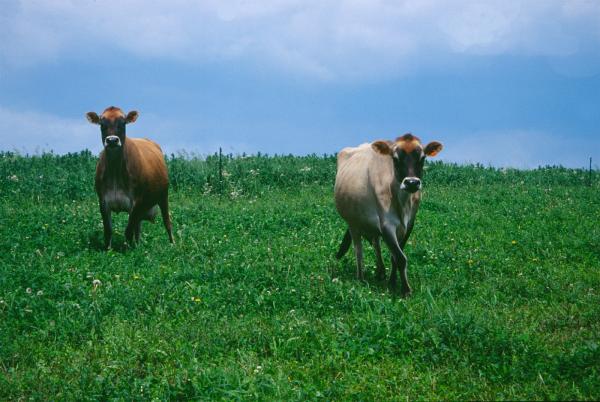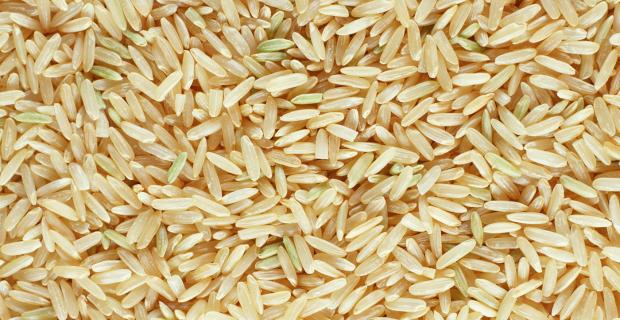Message in a Bottle

For every decision we make on our farm and at our creamery, there is a story to be told...
In 1991, before we made the transition to organic production, Straus Family Creamery received the award for top-producing dairy in our area for dairies that milk three times a day. Most dairy farmers milk twice a day, but my brother Albert had decided that milking three times a day was less stressful for the cows, and it raised milk production by about 10 to 15 percent.
Three years later, in February of 1994, Straus Family Creamery began shipping organic milk in cream-top glass bottles. That same month, the Federal Drug Administration approved the use of a new bioengineered hormone called bovine somatotropin, also known as rBST, or rBGH (for "recombinant Bovine Growth Hormone"). Farmers all over the U.S. were persuaded to inject their cows with rBGH in order to increase milk production, and rBGH became the first FDA-approved bioengineered product to make it into our food supply. None of us knew much about the hormone except for the glossy promotions sent to us by Monsanto, but at Straus, we were immediately leery of anything that would artificially pump up milk production, might adversely affect a cow’s health, and would contribute to keeping milk prices suppressed due to increased supply.
Every Farmer Must Make a Choice
Why would any dairy farmer be tempted to use this hormone? Because more milk means more income. Over the last 25 years, the price of milk has remained rather flat, while the costs of production have risen exponentially. The price for conventional (nonorganic) milk is set in Chicago and fluctuates wildly between highs and lows, making whether your farm will survive or not a frightening roller-coaster ride. Nevertheless, no matter what price is paid for the milk, that price has never covered the real costs that the average farmer spends to produce that milk.
This leaves the dairy farmer with few choices.
1. You can fold when the prices are low. Many do. Dairy farmers in America have been going out of business at a rate of five percent a year. In 1941, there were over 20,000 dairies in California. By 2002, the number had slid to just 2,150.
2. You can grow. If you have more cows (often housed in small spaces), you can produce more milk. Then, when you are paid less for your milk, you can make it up in volume and a decreased overhead. But growth takes its toll on the cows, the land and the environment.
3. You can use rBGH, which can increase milk production by 10 to 15 percent per cow. Though no one knows the exact numbers, estimates are that approximately 30 percent of dairies in America use rBGH.
4. You can try to find another option.
The Straus Choice
Our decision was to find another option. We knew we wanted to continue farming and we knew that growing our herd was not an option that would be good for our land, our cows, or our chosen way of life.
We had already discontinued the use of pesticides and chemical fertilizers on our land many years before. The idea of transitioning to organic, which also included eliminating antibiotics and hormones, seemed a natural step. (At present, a number of hormones are routinely used on conventional farms...though none are talked about other than rBGH).
We also wanted to retain control. By being an organic processor and making our own products, we could remain outside the conventional pricing system and set our own price; we could charge what it actually costs to produce the milk. We could pay our bills, support our employees and ourselves, and continue to make responsible decisions that positively affect the health of our animals, our land, and our environment.
What We Know about rBGH
Studies in Canada and the European Union have indicated that the use of rBGH does affect both the health of the cows and possibly of humans. Consequently, neither Canada nor the EU allows its use. The hormone artificially increases the amount of milk a cow can produce, which produces a state of physical stress. A stressed cow is more likely to become sick. On a conventional farm, cows are given antibiotics, while milking continues. Depending on the type of antibiotic used, Federal and State regulations allow this conventional milk to be sold immediately, or require it to be withheld from sale for up to two weeks. These antibiotics find their way into the human food chain, contributing to antibiotic resistance. A sick cow does not remain in a herd for as long and will most likely have a shorter life span.
Some of the studies on rBGH also indicate potential human health problems from ingesting milk from cows that have been given rBGH. The research shows rBGH milk contains an increased level of insulin-like growth factor-1 (IGF-1) which various studies link to colon or breast cancer. The research is not conclusive, but strong questions exist and continue to be a concern. For more information and news about current and past issues with rBGH, see the Organic Consumers Association website.
Our family, as responsible citizens and food producers, doesn’t take risks with human or herd health. It’s just not who we are. For us, the decision not to use rBGH was not complicated. Federal law forbids us, as a certified organic operation, to use rBGH, but the conflicting and adverse studies are reason enough to avoid its use. We would not risk our animals’ health on an undertested science, and we don’t use our customers as guinea pigs.
Our philosophy is to produce products that are as close to nature as possible. We are farmers. We care about our cows, our land and the quality of the product that we are offering to our neighbors and friends. Keeping it simple and organic seems the only logical choice.




